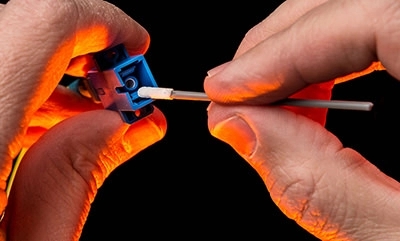광섬유 커넥터는 통신 네트워크의 필수 구성 요소입니다., 최소한의 손실로 데이터 전송 보장. 하지만, 시간이 지나면 더러워질 수 있어요, 성능에 영향을 미침. Cleaning fiber optic connectors properly is crucial to maintaining optimal network performance.

Understand the Importance of Connector Cleanliness
Fiber optic connectors are designed to transmit light signals with minimal loss, but even the smallest amount of dirt, 먼지, or debris can significantly impact the signal quality. Improper cleaning can lead to increased signal attenuation, reflections, and even permanent damage to the connector and the connected equipment.
필요한 도구
시작하기 전에, gather the necessary tools:
- 보푸라기 없는 물티슈
- 이소프로필 알코올 (at least 90%)
- Compressed air (선택 과목)
- Fiber optic cleaning swabs
- Inspection microscope
Step-by-Step Guide to Cleaning Fiber Optic Connectors
1. Power Down Your Equipment
Always power down your equipment before cleaning to avoid any potential damage or safety hazards.
2. Inspect the Connector
Use an inspection microscope to check the condition of the fiber optic connector. This will help you determine the extent of cleaning required.
3. Dry Cleaning with Swabs
Use a dry fiber optic cleaning swab to gently clean the connector end-face. Insert the swab into the adapter and rotate it a few times to remove any loose debris.
4. Wet Cleaning with Alcohol
For more stubborn contaminants, use a lint-free wipe lightly moistened with isopropyl alcohol. Wipe the connector end-face in one direction to avoid redistributing the dirt. Follow up with a dry wipe to remove any alcohol residue.
5. Use Compressed Air
(선택 과목) Use a can of compressed air to blow away any remaining dust particles. Ensure the air is dry and clean to prevent introducing new contaminants.
6. Final Inspection
청소 후, inspect the connector again with the microscope to ensure all contaminants have been removed. If necessary, repeat the cleaning process.
 클린룸 폼 면봉, 폴리에스테르 면봉, 프린터 청소 키트 제조업체 – 메디텍
클린룸 폼 면봉, 폴리에스테르 면봉, 프린터 청소 키트 제조업체 – 메디텍